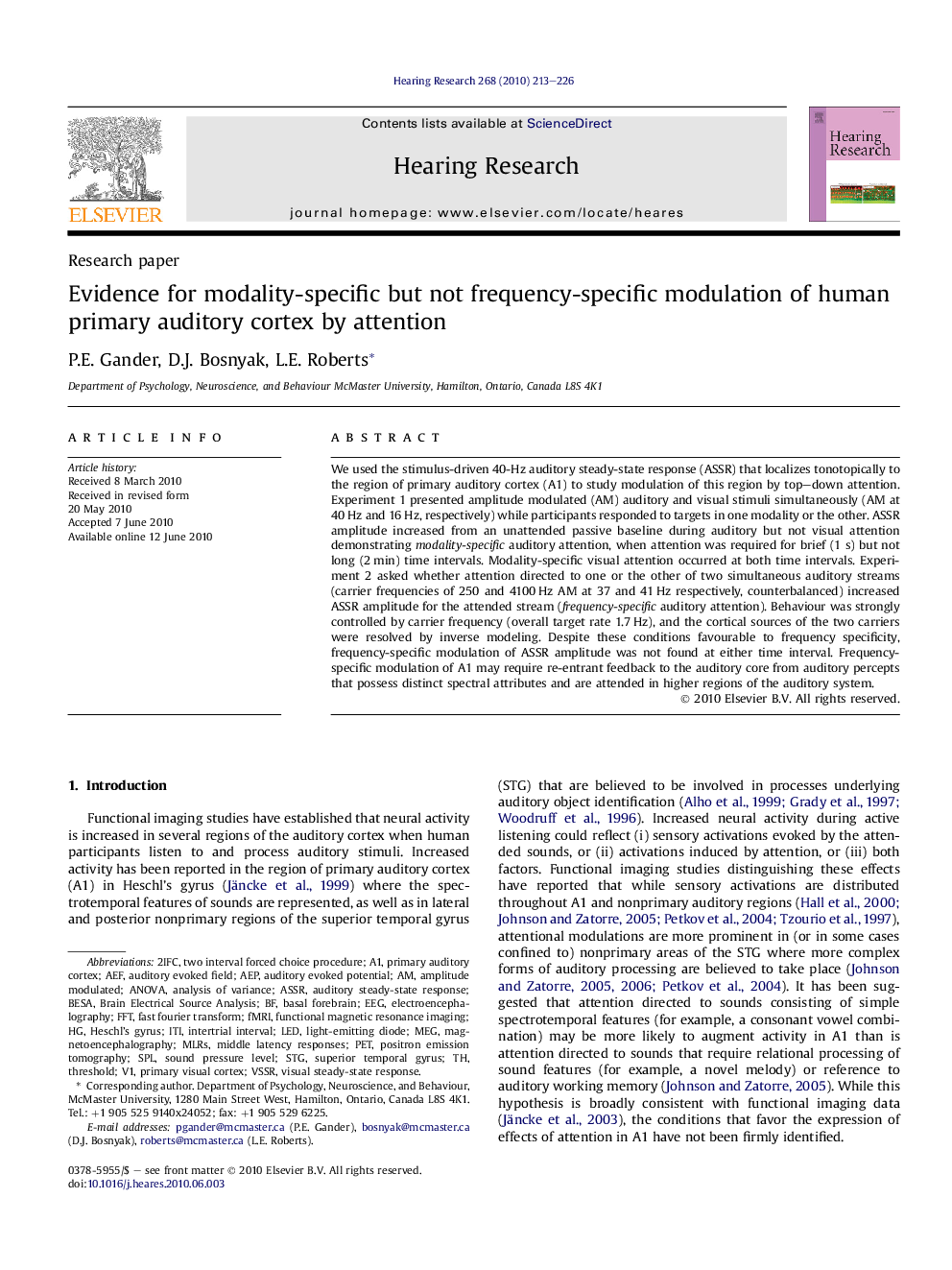| Article ID | Journal | Published Year | Pages | File Type |
|---|---|---|---|---|
| 4355619 | Hearing Research | 2010 | 14 Pages |
We used the stimulus-driven 40-Hz auditory steady-state response (ASSR) that localizes tonotopically to the region of primary auditory cortex (A1) to study modulation of this region by top–down attention. Experiment 1 presented amplitude modulated (AM) auditory and visual stimuli simultaneously (AM at 40 Hz and 16 Hz, respectively) while participants responded to targets in one modality or the other. ASSR amplitude increased from an unattended passive baseline during auditory but not visual attention demonstrating modality-specific auditory attention, when attention was required for brief (1 s) but not long (2 min) time intervals. Modality-specific visual attention occurred at both time intervals. Experiment 2 asked whether attention directed to one or the other of two simultaneous auditory streams (carrier frequencies of 250 and 4100 Hz AM at 37 and 41 Hz respectively, counterbalanced) increased ASSR amplitude for the attended stream (frequency-specific auditory attention). Behaviour was strongly controlled by carrier frequency (overall target rate 1.7 Hz), and the cortical sources of the two carriers were resolved by inverse modeling. Despite these conditions favourable to frequency specificity, frequency-specific modulation of ASSR amplitude was not found at either time interval. Frequency-specific modulation of A1 may require re-entrant feedback to the auditory core from auditory percepts that possess distinct spectral attributes and are attended in higher regions of the auditory system.
